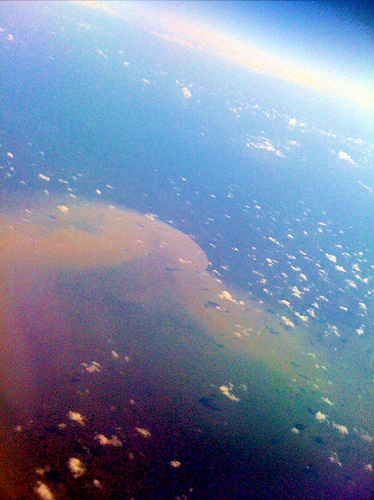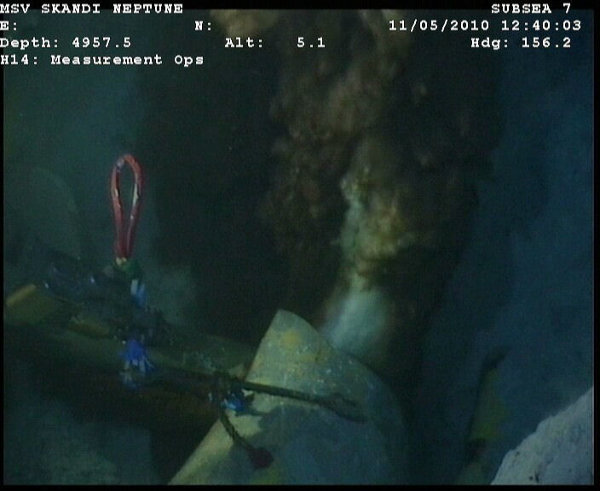Last week, experts assembled by the federal government announced the preliminary findings of efforts to analyze the amount of oil gushing out of the Gulf well. The head of the effort announced at a press briefing that the scientists’ best estimate is that 12,000 to 19,000 barrels of oil are spewing into the ocean each day—two to four times more than the government’s initial assessment. But the group’s own preliminary report on the spill size, which was provided to Mother Jones by congressional investigators, indicates that the range announced to the press may still be significantly understating the scale of the spill.
The head of the spill rate team, US Geological Survey Director Dr. Marcia McNutt, explained in a call with reporters last week that the 12,000 to 19,000 barrel figure was based on the “area of overlap” between estimates from several teams who had separately assessed satellite images of the spill area and video footage of the spill site.
But a close reading of the preliminary report (which was posted online, but is more detailed than what was sent to reporters last week) indicates that the figures were drawn from just one team—which was only analyzing oil on the surface of the water, via satellite images and remote sensing equipment. We already know that the unprecedented volume of chemical dispersants used by BP has pushed massive quantities of oil under water. Other oil has been burned off, skimmed from the top, and evaporated. McNutt said the group attempted to correct for dispersed oil, but the report indicates that the process for doing so was far from precise; the team just doubled the total from the amount that sensors and satellites show. Using video footage—which can capture oil both on and below the surface of the ocean—would be far more accurate. And indeed, the team using video footage to analyze the spill estimated that 12,000 to 25,000 barrels of oil were leaking from the site each day.
Even worse, that analysis could still be under-reporting the real size of the spill. Some of the experts on that team said their analysis had been compromised by the poor quality of the video footage provided by BP, which was little better than a You-Tube clip. Higher quality video, as one team member testified to Congress, is essential to producing an accurate calculation.
The preliminary report also suggests that the government has not come up with a precise way to account for oil that could be hard to measure due to BP’s heavy dispersant use (993,000 gallons as of yesterday). Here’s a description of the methodology from the team that came up with the 12,000 to 19,000 figure (which includes a Rumsfeldian reference to “unknown unknowns”):
Corrections are then made for the amount of oil that was evaporated, skimmed, burned, and dispersed either subsea or on the sea surface. These corrections nearly double the total amount of oil as of May 17th. The total oil is then divided by the number of days to get an average rate. This method is not without its biases that might not be captured by formal uncertainty bounds as well. For example, all of the corrections made to the surface oil were to add in losses of oil to the system. To the extent that there are other unknown processes that remove oil naturally from the system that are unaccounted for, there may be “unknown unknowns” in this analysis as well.
“I have no clue what it means mathematically to say ‘unknown unknowns,'” the congressional investigator tells Mother Jones—adding that the 12,000-19,000 range is likely “low-balling” the size of the spill.
Like the 5,000-barrel-per-day estimate that came before it, the media has now latched onto the 12,000 to 19,000 figure. But if this report is any indication, the real size of the spill remains the biggest known unknown of all.
If you appreciate our BP coverage, please consider making a tax-deductible donation.












